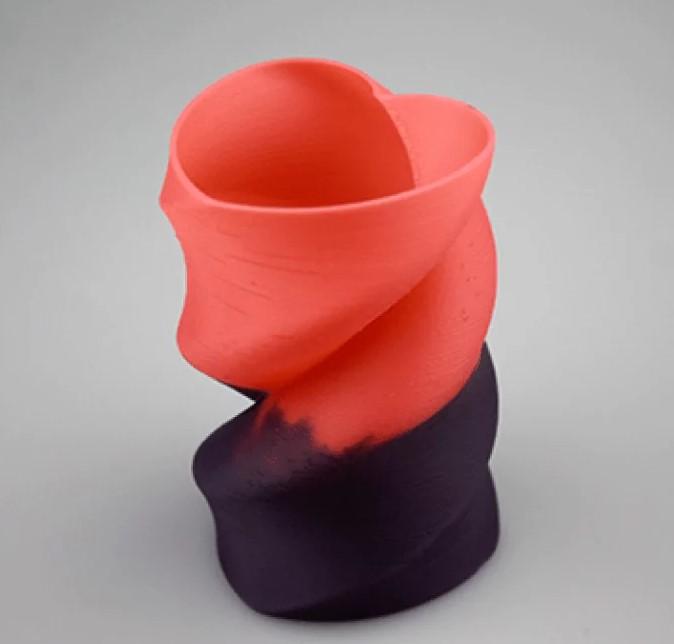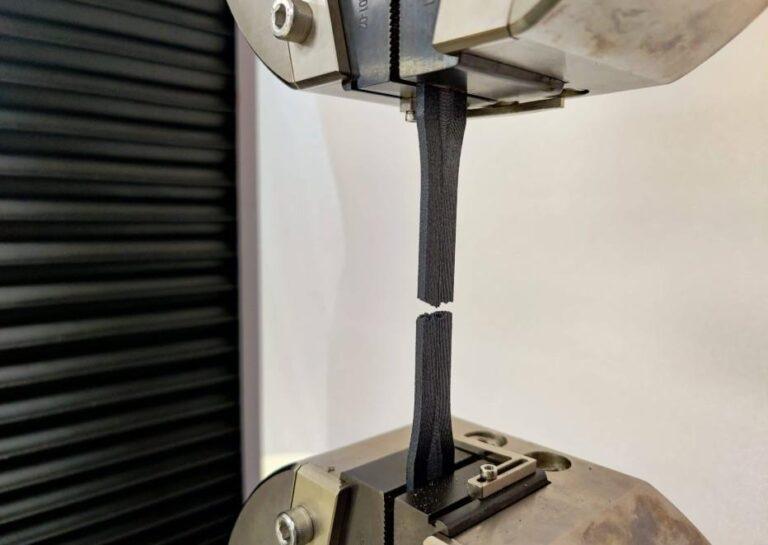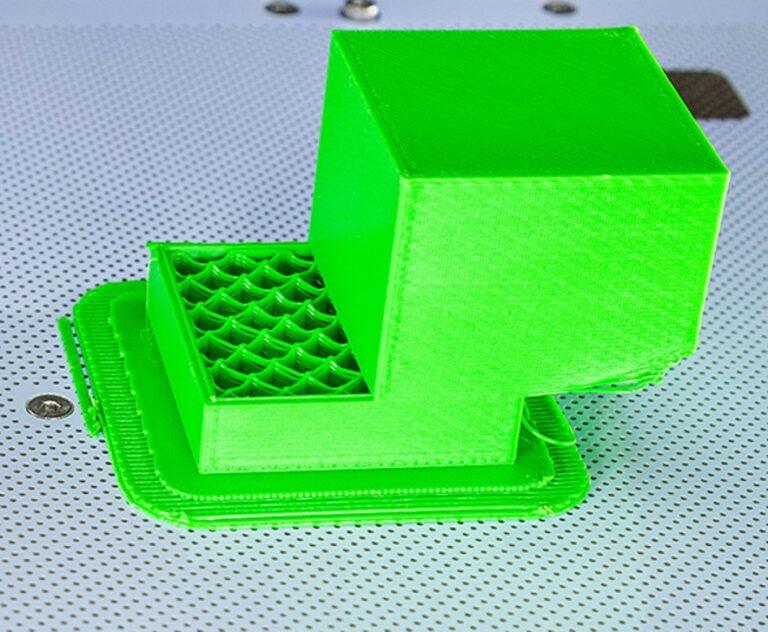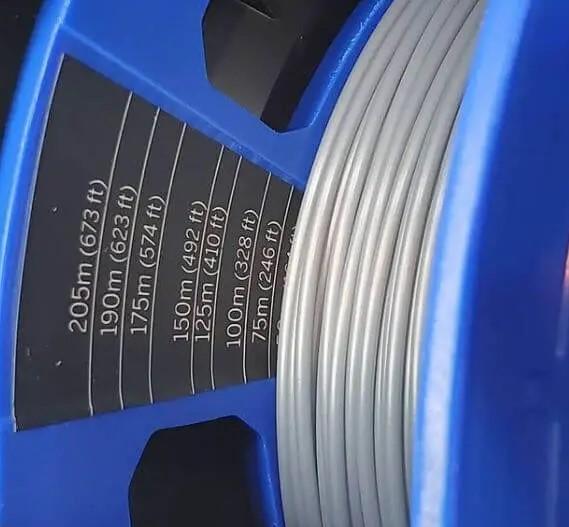ASA Filament: Unleashing the Power of Weather-Resistant 3D Printing
Introduction
ASA filament has become increasingly popular among 3D printing enthusiasts due to its unique properties. In the world of additive manufacturing, various materials are used to cater to specific needs. Commonly, materials such as PLA, ABS, and PETG have dominated the market, but growing interest in outdoor applications has paved the way for alternative options. As a result, more users are exploring advanced materials that offer enhanced durability and resistance to weather conditions. This blog post aims to provide a comprehensive understanding of ASA filament, showcasing its benefits and offering valuable tips for successful outdoor 3D printing projects.
A brief overview of 3D printing materials
For those who enjoy 3D printing, there are numerous materials accessible, including ASA filament. A large variety of materials with unique properties suitable for certain purposes are available from the additive manufacturing sector. Because of its low printing temperature and simplicity, PLA, or polylactic acid, is a well-liked, biodegradable material good for novices. Another typical material that is used to make automotive and electrical parts is ABS or acrylonitrile butadiene styrene. ABS is renowned for its strength and durability. For users looking for certain qualities like flexibility, impact resistance, or chemical resistance, other materials including PETG, nylon, and TPU offer further alternatives. The ideal material selection for a particular 3D printing project requires an understanding of the distinctive properties of each material.
Introduction to ASA filament and its unique properties
ASA filament, or acrylonitrile styrene acrylate, is a thermoplastic material specifically designed for outdoor applications. Unlike other materials such as PLA or ABS, ASA boasts excellent weather resistance, making it ideal for projects exposed to the elements. Its unique properties include superior UV resistance, preventing discoloration and degradation over time. Additionally, ASA maintains its structural integrity under varying temperatures, ensuring long-lasting durability. This material’s strong mechanical properties and resistance to water and chemicals make it a popular choice for outdoor 3D printing projects that require both aesthetics and functionality.
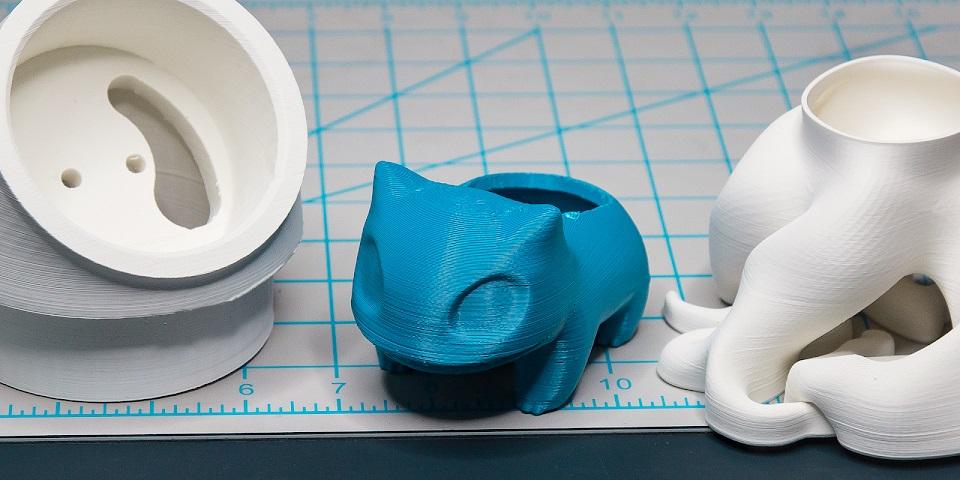
The Science Behind ASA Filament
ASA filament is a copolymer composed of acrylonitrile, styrene, and acrylic ester. This unique combination results in a material with impressive characteristics. It shares similarities with ABS, another widely-used thermoplastic, but offers superior resistance to UV rays and weather-related wear. ASA’s chemical composition provides the material with outstanding mechanical strength, making it suitable for various outdoor applications. Its ability to withstand temperature fluctuations, resist moisture, and maintain its color over time sets ASA filament apart from other 3D printing materials. This robust material has become the go-to choice for users seeking long-lasting, weather-resistant 3D prints.
Chemical composition and structure
The chemical composition of ASA filament involves three main components: acrylonitrile, styrene, and acrylic ester. Acrylonitrile contributes to the material’s strength and chemical resistance, while styrene offers rigidity and processability. The acrylic ester is responsible for ASA’s excellent UV resistance and weather ability. The precise balance of these components in ASA filament results in a material that combines the best features of both ABS and PLA. Furthermore, the copolymer structure of ASA ensures that it remains stable under extreme environmental conditions, making it an ideal choice for outdoor applications where durability is crucial.
Comparison to ABS and PLA filaments
ASA filament, ABS, and PLA are all popular thermoplastics used in 3D printing, but they differ in several ways. PLA, a biodegradable material derived from renewable resources, is well-suited for beginners due to its ease of use and low printing temperature. However, PLA lacks the strength and weather resistance required for outdoor applications. ABS, on the other hand, offers higher strength and durability, but its UV resistance falls short compared to ASA. ASA filament outshines both ABS and PLA in terms of weather ability, UV resistance, and long-term durability, making it the preferred choice for outdoor projects requiring a robust and reliable material.
| Material | Ease of Use | Strength | Durability | UV Resistance | Weather Resistance | Temperature Stability | Biodegradability |
|---|---|---|---|---|---|---|---|
| ASA Filament | Moderate | High | High | High | High | High | No |
| ABS | Moderate | High | High | Low | Moderate | High | No |
| PLA | Easy | Moderate | Low | Low | Low | Low | Yes |
Key features of ASA filament
ASA filament stands out among 3D printing materials due to its unique set of features. Its most notable attribute is its exceptional UV resistance, which prevents fading and yellowing when exposed to sunlight. This material also offers excellent weather resistance, making it suitable for outdoor applications where it can withstand rain, wind, and temperature fluctuations. ASA’s mechanical strength ensures that printed objects remain durable and functional over time. Additionally, ASA filament is available in a wide range of colors, providing users with ample options for their projects. These key features make ASA an ideal choice for creating long-lasting, weather-resistant 3D prints.
UV resistance
One of the most remarkable features of ASA filament is its superior UV resistance. Exposure to sunlight can cause many 3D printing materials to degrade, fade, or yellow over time. However, ASA’s unique chemical composition, which includes acrylic ester, enables it to maintain its color and structural integrity even when subjected to prolonged UV exposure. This attribute makes ASA filament an excellent choice for outdoor projects that require a material capable of withstanding the damaging effects of sunlight. Users can confidently create prints that retain their appearance and functionality for an extended period.
Weather resistance
ASA filament excels in its ability to resist various weather conditions, making it ideal for outdoor applications. Unlike other materials that can become brittle or degrade when exposed to moisture, wind, or temperature fluctuations, ASA maintains its structural integrity and appearance. Its resistance to water and chemicals ensures that 3D prints remain durable and functional, even in harsh environments. This weather resistance is a result of ASA’s unique chemical composition and copolymer structure. Consequently, ASA filament has become a popular choice for those seeking a reliable material for outdoor 3D printing projects.
Mechanical strength
ASA filament is known for its impressive mechanical strength, making it suitable for a wide range of applications. Its balanced combination of acrylonitrile, styrene, and acrylic ester results in a material that is both rigid and tough. This strength allows ASA 3D prints to withstand significant mechanical stress and maintain their shape and functionality over time. In comparison to other materials like PLA, ASA offers superior durability and robustness. This makes ASA filament the preferred choice for projects requiring a material that can handle demanding conditions and maintain its structural integrity.
Advantages of ASA Filament for Outdoor Applications
ASA filament offers several advantages for outdoor applications, setting it apart from other 3D printing materials. Its exceptional UV and weather resistance ensures that printed objects maintain their color and structure, even when exposed to sunlight, rain, and temperature changes. ASA’s mechanical strength allows for the creation of durable and functional prints that can withstand the wear and tear of outdoor use. Additionally, its resistance to water and chemicals makes it suitable for applications in harsh environments or where exposure to corrosive substances is likely. These advantages make ASA filament an ideal choice for users seeking a reliable and long-lasting material for their outdoor 3D printing projects.
Durability in harsh weather conditions
ASA filament’s durability in harsh weather conditions sets it apart from many other 3D printing materials. Its unique composition allows it to withstand extreme temperatures, moisture, and prolonged exposure to sunlight without losing its structural integrity. This ability to endure harsh conditions is essential for outdoor applications where prints must remain functional and maintain their appearance over time. The combination of UV resistance, weather resistance, and mechanical strength makes ASA filament an ideal choice for projects that require a material capable of withstanding challenging outdoor environments while preserving its quality and performance.
Resistance to fading and yellowing
ASA filament’s resistance to fading and yellowing is a significant advantage for outdoor 3D printing projects. Many materials tend to lose their color or become yellow when exposed to sunlight over extended periods, which negatively impacts their appearance. However, the acrylic ester component in ASA’s composition imparts exceptional UV resistance, preventing discoloration and preserving the vibrancy of printed objects. This resistance ensures that outdoor prints made with ASA filament maintain their aesthetic appeal and quality, making it an ideal material for projects where color retention and longevity are essential factors.
Stability in high temperatures
ASA filament’s stability in high temperatures makes it suitable for a wide range of outdoor applications. Unlike materials like PLA, which can warp or deform under elevated temperatures, ASA maintains its shape and mechanical properties even when exposed to heat. This high-temperature stability results from its unique chemical composition and copolymer structure. As a consequence, 3D-printed objects made from ASA filament can be used in environments with fluctuating temperatures without compromising their functionality or appearance. This attribute further solidifies ASA’s position as a top choice for creating durable, reliable outdoor 3D prints.
Wide range of available colors
ASA filament is available in a wide range of colors, providing users with numerous options for their 3D printing projects. This versatility allows for greater creativity and customization when designing outdoor prints. Furthermore, ASA’s UV resistance ensures that these vibrant colors remain vivid and unaffected by prolonged sun exposure. This variety of color options, combined with the material’s exceptional durability and weather resistance, makes ASA filament an attractive choice for those seeking both aesthetic appeal and functionality in their outdoor 3D printing projects.
The Best ASA Filament Brands
PolyLite ASA Filament
PolyLite ASA filament boasts a low tolerance of +/- 0.03 mm, providing excellent quality prints. With a glass transition temperature of 97.8 °C, PolyLite recommends drying the filament at 80 °C for eight hours before use. Polymaker’s 4.7 out of 5-star rating on Amazon from 498 ratings speaks to its popularity among users. However, some users have experienced warping issues, so PolyLite suggests using a BuildTak print bed or applying Magigoo.
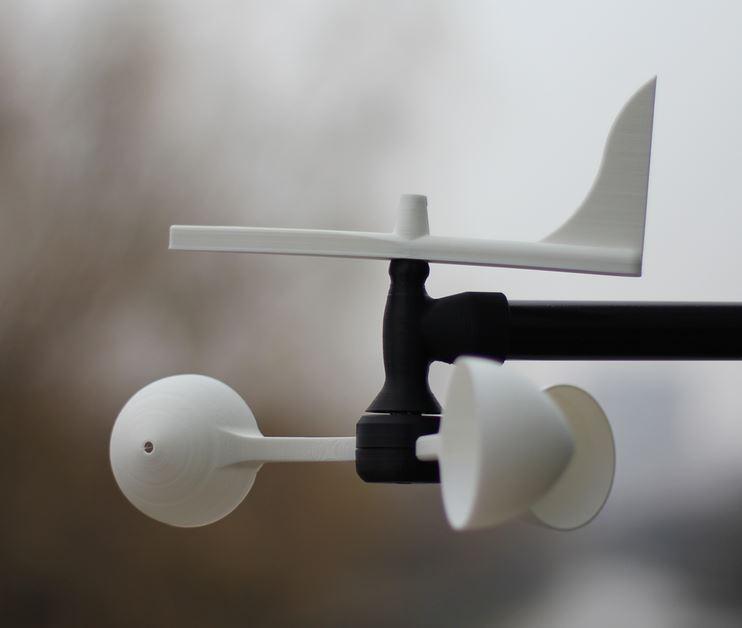

Prusament ASA Filament
Prusa Research’s Prusament ASA filament is an affordable option at around $30 for an 850-g spool. Although it maintains a diameter tolerance of +/- 0.05 mm, it is easy to post-process and responds well to acetone vapor smoothing. Users have praised this filament for its high-quality, strong, and durable prints.
Fillamentum Extrafill ASA Filament
Fillamentum ASA Extrafill has a dimensional tolerance of +/- 0.05 mm and comes in 11 colors and three diameter sizes. While its price is on the higher side, the manufacturer claims that the material is recyclable and not very hygroscopic, adding to its appeal.
FilamentOne Pro ASA Filament
FilamentOne Pro ASA filament features an impressive dimensional accuracy of +/- 0.02 mm. With low warping properties and strong layer-to-layer adhesion, this filament has received positive feedback, although some users noted that it doesn’t react well with acetone for layer smoothing.
FormFutura ApolloX ASA Filament
ApolloX ASA filament is known for its durability and strength, making it ideal for outdoor and physically stressed prints. With a diameter tolerance of under +/- 0.05 mm, the filament is resistant to high temperatures and UV rays. Users have reported beautiful prints when using the right settings.
3DXMax ASA Filament
3DXMax ASA filament offers several color choices and a dimensional accuracy of +/- 0.05 mm. While some users have reported warping issues, others have praised the filament for its ease of use and compatibility with water-soluble support materials.
eSun eASA Filament
eSun’s eASA filament is resistant to weather, heat, and static. Although the filament only comes in two colors, users have provided mixed reviews about its warping properties, with some having no issues at all.
ColorFabb ASA Filament
ColorFabb ASA filament is resistant to UV rays and can withstand temperatures up to 96 °C. Though it may be more prone to warping than PLA and PETG filaments, users can achieve high-quality prints with the right settings.
Raise3D ASA Filament
Raise3D’s ASA filament is a compatible option with a lower recommended bed temperature than other ASA filaments, allowing more machines to print with it. Although it only comes in black, users can post-process and paint their prints.
3D Best-Q ASA+ Filament
3D Best-Q ASA+ filament has a dimensional accuracy of +/- 0.03 mm and is suitable for outdoor use. The filament offers low warping properties and spectacular layer-to-layer adhesion, but users have reported mixed results in terms of detail on prints.
comparison table
| Brand | Price (per 1 kg) | Diameter Options | Spool Sizes | Colors | Dimensional Accuracy | Nozzle Temperature | Bed Temperature |
|---|---|---|---|---|---|---|---|
| PolyLite | ~$30 | 1.75, 2.85 mm | 1 kg | 6 | +/- 0.03 mm | 240-260 °C | 75-95 °C |
| Prusament | ~$35 | 1.75 mm | 0.85 kg | 7 | +/- 0.03 mm | 250-270 °C | 105-115 °C |
| Fillamentum | ~$40 | 1.75, 2.85, 3.00 mm | 0.75, 2.5 kg | 11 | +/- 0.05 mm | 240-255 °C | 80-105 °C |
| FilamentOne Pro | ~$40 | 1.75 mm | 1 kg | 7 | +/- 0.02 mm | 235-255 °C | 90-110 °C |
| FormFutura | ~$46 | 1.75, 2.85 mm | 0.25, 0.75, 2.3, 4.5, 8 kg | 7 | +/- 0.05 mm | 235-255 °C | 80-100 °C |
| 3DXMax | ~$40 | 1.75, 2.85 mm | 1 kg | 11 | +/- 0.05 mm | 235-255 °C | 90-110 °C |
| eSun | ~$37 | 1.75 mm | 0.5, 1 kg | 2 | N/A | 220-260 °C | 90-110 °C |
| ColorFabb | ~$40 | 1.75, 2.85 mm | 0.65 kg | 2 | +/- 0.1 mm | 240-260 °C | 90-100 °C |
| Raise3D | ~$40 | 1.75 mm | 1 kg | 1 | N/A | 240-260 °C | 75-95 °C |
| 3D Best-Q | ~$30 | 1.75 mm | 1 kg | 2 | +/- 0.03 mm | 240-260 °C | 100 °C |
Tips for Successful ASA 3D Printing
For successful ASA 3D printing, ensure your printer’s build plate is heated to reduce warping with ASA filament. Utilize adhesion methods, such as BuildTak or Magigoo, to enhance bed adherence. Enclosures help maintain stable temperatures and improve print quality. Gradually increase fan speed after the first few layers to achieve better layer adhesion. Lastly, store ASA filament in a dry environment, as it is sensitive to moisture, to maintain optimal print results.
Printer settings and calibration
Calibrating your printer for ASA filament requires fine-tuning various settings. Adjust the nozzle temperature between 240-260°C for optimal extrusion. Set the bed temperature between 80-110°C to ensure proper adhesion. Maintain a moderate print speed, approximately 30-50 mm/s, to enhance layer bonding. In addition, calibrate the printer’s retraction settings to minimize stringing and oozing. Remember to adjust settings according to your specific printer and ASA filament brand for the best results.
Bed adhesion and surface preparation
Bed adhesion and surface preparation are crucial for successful ASA filament printing. Clean the bed surface thoroughly before printing. Use adhesion aids like glue sticks, BuildTak, or Magigoo to enhance bed adhesion. A brim or raft can be added to increase the surface contact area, reducing warping. Heated bed chambers or printer enclosures can help maintain consistent temperatures, further minimizing warping issues during ASA filament printing.
Temperature and humidity control
Controlling temperature and humidity is important when printing with ASA filament. High humidity can cause the filament to absorb moisture, which leads to warping, decreased quality, and clogs. To prevent this, store the filament in a dry and airtight container with desiccant. Additionally, ensure that your printer’s temperature is set correctly, with a nozzle temperature of 240-260°C and bed temperature of 75-100°C. Finally, consider using an enclosure to help maintain a consistent temperature and protect the print from cool drafts.
Post-processing techniques
Post-processing ASA filament prints can greatly enhance their appearance and performance. One popular technique is acetone vapor smoothing, which can give prints a glossy finish. Sanding can also be used to smooth rough surfaces while painting or dyeing can add color. Additionally, annealing can improve the strength and durability of ASA filament prints. It’s important to research the specific post-processing techniques that work best for ASA filament to achieve optimal results.
Popular Outdoor ASA 3D Printing Projects
Several popular outdoor ASA filament 3D printing projects include birdhouses, garden planters, and patio furniture. ASA filament is ideal for these projects because it is UV and weather-resistant, ensuring that the finished product will last outdoors for extended periods. Birdhouses and planters can be easily customized with different shapes and sizes, while patio furniture can be personalized with unique designs. ASA filament can also be painted or sanded, providing additional opportunities for customization. Overall, ASA filament is an excellent choice for anyone looking to create durable and long-lasting 3D-printed projects for outdoor use.
Garden accessories and planters
ASA filament is perfect for garden accessories and planters due to its weather resistance. 3D print garden hose nozzles, plant markers, and birdhouses. You can also 3D print unique planters in various shapes and sizes. ASA filament can withstand outdoor temperatures, so your garden accessories and planters will last longer. 3D printing these items is cost-effective, and you can customize them to suit your preferences.
Outdoor signs and decorations
Outdoor signs and decorations made with ASA filament are durable and weather-resistant. These can be customized with intricate designs, logos, and messages. ASA filament’s UV resistance makes it a perfect choice for outdoor signage that will be exposed to sunlight. ASA filament can also be used to make outdoor decorations such as holiday ornaments, wind chimes, and garden flags. The flexibility of ASA filament allows for intricate designs and patterns, making it a versatile option for outdoor projects.
Sporting equipment and accessories
ASA filament can be used to create durable sporting equipment and accessories such as bike parts, protective gear, and water bottles. The material’s resistance to UV rays and harsh weather conditions makes it ideal for outdoor activities. ASA-printed parts are also lightweight, which is beneficial for equipment that requires portability. ASA filament’s ability to withstand wear and tear makes it a popular choice for creating custom sports equipment and accessories.
Automotive and marine parts
ASA filament is a great option for 3D printing automotive and marine parts. Its durability and resistance to UV light, heat, and chemicals make it suitable for outdoor use. You can print parts such as air vents, fan shrouds, dashboards for cars, cleats, fender brackets, and propellers for boats. ASA filament’s ability to maintain its shape under extreme conditions and exposure to saltwater makes it an excellent choice for marine applications. With the right printer settings and post-processing techniques, you can create high-quality and long-lasting parts.
Overcoming Common Challenges with ASA Filament
ASA filament may experience warping, cracking, and stringing. To prevent warping, ensure proper bed adhesion and temperature control. Adjust retraction settings to minimize stringing. To prevent cracking, use a cooling fan and print at lower temperatures. Increase infill to prevent brittle parts. Also, consider the environmental conditions and storage of the filament to prevent moisture absorption.
Warping and layer adhesion issues
When using ASA filament, warping and layer adhesion issues can arise, leading to print failures. To prevent this, ensure proper bed adhesion and calibration. Additionally, use an enclosure to maintain a consistent temperature and reduce the chance of drafts. Increasing the bed temperature and reducing the cooling fan speed can also help. When layer adhesion issues occur, try adjusting the extrusion temperature or increasing the infill percentage. These measures can significantly improve the overall quality of your prints.
Ventilation and fume concerns
When using ASA filament, proper ventilation is essential to avoid fume concerns. Ensure that your 3D printer is placed in a well-ventilated area, and use a ventilation system that can extract fumes effectively. You may also consider wearing a respirator to protect yourself from harmful fumes. Additionally, it’s essential to avoid overheating the filament, as it can release toxic fumes. Use the recommended printing temperature and avoid leaving the printer unattended. Overall, taking precautions and being aware of potential fume concerns can help you safely print with ASA filament.
Tips for storage and handling
To ensure the longevity and print quality of ASA filament, proper storage, and handling is crucial. Store ASA filament in a cool and dry place, away from direct sunlight or heat sources. Keep it in an airtight container with desiccant to prevent moisture absorption. When handling the filament, avoid touching it with bare hands as the oils from the skin can affect adhesion. Use gloves or a clean cloth. Before printing, check for any signs of damage or contamination. If there are any issues, cut off the damaged part before printing.
Sustainability and Environmental Impact of ASA Filament
ASA filament has a relatively low environmental impact compared to other materials. However, the disposal of waste and emissions from production can still contribute to environmental concerns. To reduce the environmental impact, it is recommended to recycle and properly dispose of any waste materials. Additionally, consider using energy-efficient printing settings and minimizing the use of support structures to reduce material waste. Finally, when purchasing ASA filament, look for eco-friendly options that are made from recycled materials or are biodegradable.
Recycling and disposal options
It is crucial to adhere to the rules established by your neighborhood recycling center or waste management facility when it comes to recycling and disposing of ASA filament. While some recycling facilities might take ASA filament, others might not. It’s also crucial to properly discard any scraps or unsuccessful prints. Consider printing objects with fewer supports and infill to save waste. Moreover, think about repurposing scraps or unsuccessful prints for upcoming projects. We can lessen the effect of 3D printing on the environment by following suitable procedures for recycling and disposal.
Comparison to other 3D printing materials
When it comes to 3D printing materials, ASA filament has some unique properties. Unlike other materials, ASA can withstand harsh weather conditions, making it an ideal choice for outdoor applications. However, recycling ASA filament can be challenging compared to other materials like PLA or ABS. Unlike PLA, which is biodegradable, ASA is not compostable. It is also more difficult to recycle than ABS. While some companies offer recycling programs for ASA, it’s important to carefully consider the environmental impact of using this material before printing with it.
Conclusion
In conclusion, ASA filament is a versatile 3D printing material suitable for a variety of outdoor applications. With proper printer settings, calibration, bed adhesion, and temperature control, successful prints can be achieved. Post-processing techniques can enhance the final product’s appearance and functionality. However, some common challenges, such as warping and ventilation concerns, need to be overcome. Storage and handling guidelines should be followed, and recycling and disposal options should be considered. Compared to other 3D printing materials, ASA filament offers unique benefits, including UV and weather resistance.
Recap of ASA filament’s benefits for outdoor 3D printing
ASA filament is ideal for outdoor 3D printing due to its resistance to UV light and weathering. It also offers excellent mechanical properties, such as high strength and impact resistance. Additionally, ASA filament is easy to print with and has minimal warping. With proper storage and handling, it can be used for a long time, and it can be recycled for sustainability. In conclusion, ASA filament is a reliable and practical choice for creating durable and high-quality outdoor 3D prints.
Encouragement to explore and experiment with ASA filament projects
A versatile and strong substance, ASA filament enables innovative and long-lasting outdoor 3D printing solutions. Given the correct parameters, bed adhesion, and post-processing methods, ASA can yield prints of excellent quality with little warping or other issues. Don’t be afraid to experiment and push the envelope as you investigate the potential of ASA filament. With a little imagination and effort, you can make one-of-a-kind, useful parts that are ideal for your outdoor area.
How to calibrate your 3D printer for ASA filament printing?
- Level the Bed
Ensure that the bed is level by using a piece of paper and adjusting the screws under the bed to achieve proper leveling.
- Adjust Extruder Temperature
Heat the extruder to the recommended temperature for ASA filament and adjust it to the appropriate temperature for the specific brand of ASA filament you are using.
- Adjust Print Bed Temperature
Heat the print bed to the recommended temperature for ASA filament and adjust it to the appropriate temperature for the specific brand of ASA filament you are using.
- Set Print Speed
Adjust the print speed to the recommended speed for ASA filament and adjust it to the appropriate speed for the specific brand of ASA filament you are using.
- Fine-Tune Extruder Steps
Adjust the extruder steps by printing a calibration cube and measuring its dimensions, then adjusting the extruder steps to ensure the correct amount of filament is being extruded.
- Test Print
Print a small test print to verify the calibration, and make any final adjustments as needed to achieve the desired print quality.
Remember to refer to your printer’s manual for specific instructions and recommended settings, as well as to the manufacturer’s guidelines for the ASA filament you are using.
FAQs
ASA filament is a 3D printing material that offers excellent UV resistance and weatherability, making it perfect for outdoor applications.
No, ASA filament requires a 3D printer that has a heated bed and a nozzle that can reach a temperature of at least 250°C.
Proper bed adhesion and temperature control can help prevent warping. You can also try using a brim or raft to help hold the print in place.
Yes, ASA filament is recyclable, but the recycling process may vary depending on the recycling center.
Yes, ASA filament can be painted and post-processed using techniques such as sanding, polishing, and chemical smoothing.
No, ASA filament is not food-safe and should not be used for any applications that involve food contact.
ASA filament can be stored for up to two years if it is kept in a dry, cool, and dark place in its original packaging.
Yes, ASA filament is known for its high strength and durability, making it suitable for high-stress applications such as automotive and marine parts.


